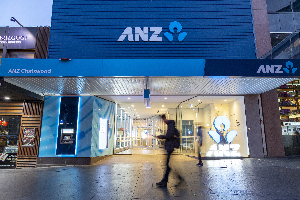All the economists who responded to the regular mortgagerates.co.nz survey anticipate the Reserve Bank will keep the OCR on hold at 1.75% at next week’s Monetary Policy Statement (MPS).
While the Reserve Bank signalled a more neutral stance at the November MPS, improved inflation results and a positive domestic economic outlook have boosted the case for leaving the OCR unchanged.
Westpac acting chief economist Michael Gordon said they expect the Reserve Bank to hold the OCR at the current rate, with a firmly neutral outlook.
“The Reserve Bank will take some comfort from the fact that inflation is finally back within the target range – but there are still some significant barriers to a further pickup in inflation from here.”
“Rising mortgage rates and a stronger New Zealand dollar mean that financial conditions have already tightened by more than the Reserve Bank intended.”
ASB chief economist Nick Tuffley agreed. He said the inflation outlook has firmed since the last MPS in November, particularly for 2017.
“This should offer a greater degree of comfort for the Reserve Bank, with a reduced risk of inflation remaining uncomfortably low in the near term.
“But there are still a number of risks to the downside for inflation, key among which is the impact of new US President Donald Trump’s economic and trade policies on New Zealand.”
To this end, our survey respondents all weighted the probability of the OCR staying on hold at the highest end of the spectrum.
BNZ senior economist Doug Steel put the probability at 100% while none of the other economists gave a probability figure below 95%.
There was also consensus on the view that the OCR has now troughed in this cycle.
ANZ chief economist Cameron Bagrie said that with strong growth, capacity pressures emerging and inflation past its lows, further OCR cuts would now be hard to justify.
That means that, in ANZ’s view, the next move is up.
NZIER senior economist Christina Leung said she thinks the OCR has troughed and can see only a small possibility of further cuts.
“Any cut would be triggered by a global meltdown in financial markets. It’s very uncertain times ahead given global tensions, but the New Zealand economic outlook remains solid for now.”
First NZ Capital director of economics and strategy Chris Green put the possibility of another cut at 20%.
He said the factors potentially prompting a cut include a global recession, global trade war, China downturn, Euro zone break-up, US downturn and/or a major New Zealand earthquake.
“But our central scenario is that we have reached a trough in the current domestic interest rate cycle – in the absence of a significant negative domestic or international shock.”
UBS NZ Ltd senior economist Robin Clements thinks there is 10% probability of another cut, which would be due to a negative global economic or financial market shock.
“But I will be looking to the Reserve Bank for a signal from that they are neutral - i.e. just as much chance rates go up, as down, from here.”
In light of the widely held view that the OCR has hit its low, the talk has shifted to when the Reserve Bank might hike the OCR again.
For this reason, all the economists said they would be watching the OCR track rate closely to see if a future hike was flagged.
Gordon said that financial markets have taken up the idea that the next move in the OCR will be up, with a more than a 25 basis point increase by the end of this year now factored in.
This is largely due to inflation improvements but, in Westpac’s view, that thinking is far too hasty.
“Inflation is finally back above 1%, but there are still some significant hurdles to getting it back to even the 2% midpoint of the target range, let alone into the upper end of the range.
“Raising the OCR again, or even signalling the possibility in next Thursday’s MPS, would merely risk inflation undershooting 2% for even longer.”
For this reason, he anticipates a firmly on-hold statement next week, in line with the November projections.
Tuffley said the Reserve Bank has scope to be a little more neutral in next week’s MPS.
“The tricky balancing-act will be to express more comfort over the inflation outlook, yet still give a clear message that OCR increases are still a long way off.
“Failure to strike the right balance could prompt an unwanted reaction from financial markets.”
TD Securities head of Asia-Pacific research Annette Beacher said she expects a repeat of the neutral stance from November.
“A surprise will be an explicit tightening bias.”
All of the economists expect the Reserve Bank to start hiking the OCR again in 2018, although some picked this to come early in the year while others thought it would come towards the end of the year.





Comments
No comments yet.
Sign In to add your comment